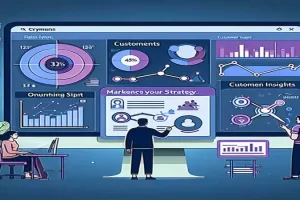Nft, Web3 And The Metaverse For Digital Marketing
It is impossible today to avoid the growing hype surrounding NFT, metaverses, and now Web3. Over the last couple months, we received many questions from clients, friends, and partners asking us for our thoughts on all the above, and most importantly, what this means for digital marketing.
While this might be difficult to visualize, it is only natural that the web would need to grow past the platform-based ecosystem it is today, as we deal with emerging technologies, consumer privacy standards, and immersive content experiences. A lot is still uncertain, since from a marketing standpoint, there is not a roadmap in place, and likely will not be for some time. However, we can anticipate the effects of NFT, Web3 and metaverse on digital marketing, understanding its core functions and how it might evolve further.
A Non-fungible Token (NFT) is a digital token that is entirely unique and cannot be replaced. NFTs are part of the Ethereum blockchain, which means that they are a form of cryptocurrency. These tokens can hold additional information, and they can also live in digital form in the form of drawings, music, videos, and graphics.
Canadian musician Grimes sold a 50-second video on an NFT for more than $390,000, showing how digital content could be valued similarly to a work of art. NFTs have the potential to transform the landscape for digital content creators, who are currently undervalued within the digital ecosystem. This is because ownership of content, and practices of buying media, are ultimately owned by platforms, rather than creators themselves. I believe NFTs would provide a means for creators to secure, own, and monetize their digital content, something which is not possible in the world of platforms today. Brands have started building out NFTs, but whether or not the value of branded content is really high enough for them to affordably scale into the NFT format remains to be seen.
Once I was able to get past my initial resistance to the immaterial nature of the Webs future evolution, I found myself encouraged by understanding that Web3s vision is a positive – if not idealistic – concept rooted in returning power to people. Web3 is the third generation of the World Wide Web, intended as a digital space accessible to everyone, where people can connect and create without restrictions, censorship, or the meddling of large corporations. Web 1.0 was a “read-only” version of the web, with page-oriented content and cookie-based user tracking. Web 2.0 is interactive and application-based, leaning toward content that is focused around user IDs that are signed in, and gave us the birth of social media and e-commerce.
Web3 is going to be more of an individualized experience, giving users real ownership of their data. It uses blockchain technology and the corresponding unique user IDs, so Internet users will have control over what is shared, including location and reason. Apples Siri is one example of Web3 technology we have had access to for years, particularly in regards to its use of voice recognition software.
Right now, this does not really have a lot of implications for digital marketing. Until UX design catch up to the technology behind it, Web 2.0 users wonat quickly embrace it. Once UX is established for some of our more used applications, and/or for the new applications yet to be adopted, we should expect to see changes to content creation, media purchasing, and shopping/online payments.
However, it is worth considering what insights we as marketers will have in the World of Web3 when we move away from cookies and start to lean more heavily on our first-party known data. Will consumers control over data remove sharing with marketers?.
The Metaverse, in its most basic terms, is the future of digital interactions, merging virtual and physical worlds. Many people, including me, think video games when they hear the term metaverse.
However, metaverses are already impacting industries like health care, providing a virtual hands-on learning experience for health care professionals. Ideally, the metaverse would be supported by the Web3, but todays metaverse is owned by major platforms like Meta, Google, and major game companies.
What that means for digital marketers is it is time to move experimentation marketing to a new level. As consumers continue to embrace the virtual vs. physical experience world, consider testing out smaller ways of providing this experience via platforms that you are currently present on. Virtual concerts, live sales events, and virtual product trials are all ways to get your toes in the VR waters and learn about consumers reactions. If you are starting to run events in-person again, think about ways to incorporate even just one simple virtual component, such as voting on new products digitally.
While we do not know exactly what the future holds, it is exciting to have a chance to be part of the next evolution in creativity, communications, and technology. It is nice to have some doubts, but do not forget an open mind is the only way for the new things to come. Forbes Business Council is the premier growth and networking organization for entrepreneurs and leaders.




